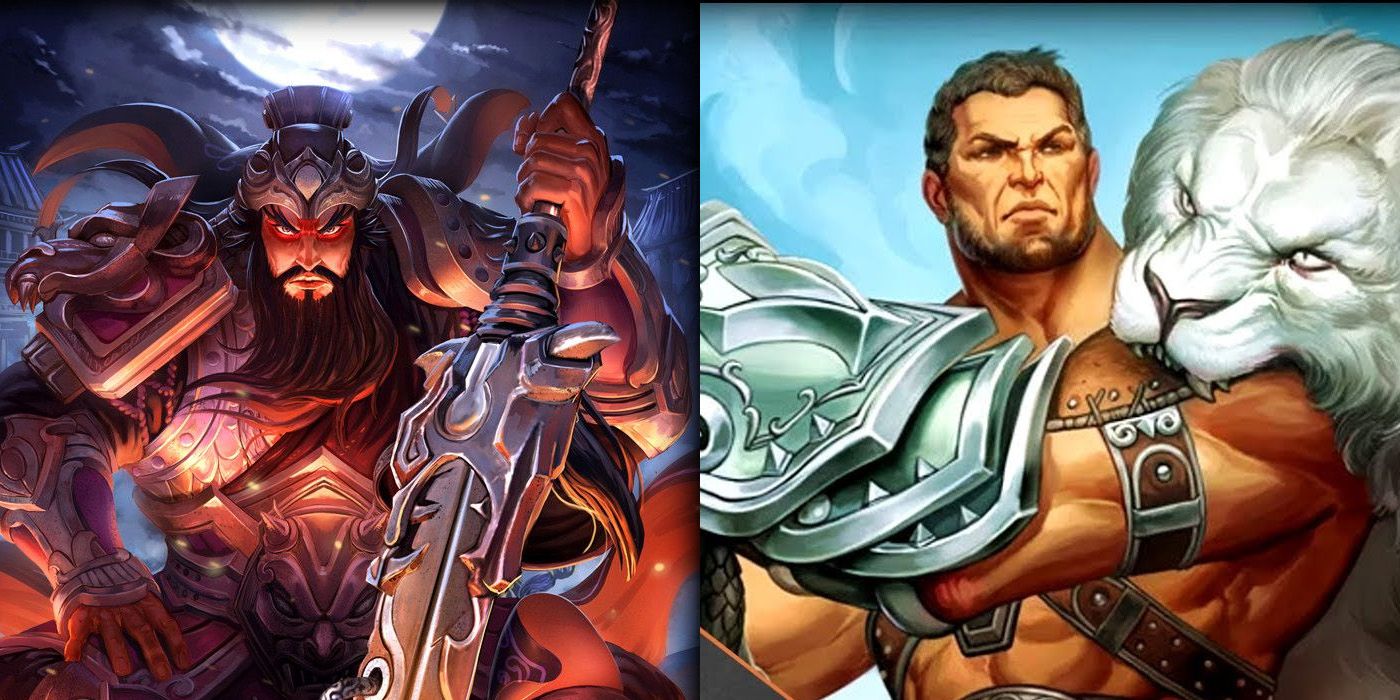
Players of the Hi-Rez MMO Smite can bring forth the fury of Gods in intense 5-versus-5 matches - with Warrior Gods touting some of the most balanced kits out there. Unlike other Classes, Warriors specialize in both offense and defense, allowing them to protect objectives on their own. Additionally, the Warrior's fairly-balanced abilities give them room for options to boost their offensive, defensive, and even support capabilities. And in the case of skills, Warrior Ultimates boast some of the most flexible combat options available to players.
RELATED: 5 Reasons Why Overwatch Dominates The MOBA Scene (& 5 Why Smite Is Better)
However, in that regard, just what makes a Warrior Ultimate stand out among the rest? Moreover, of all Warrior Gods in Smite, just which 10 should players choose or, dare say, get out of the way of?
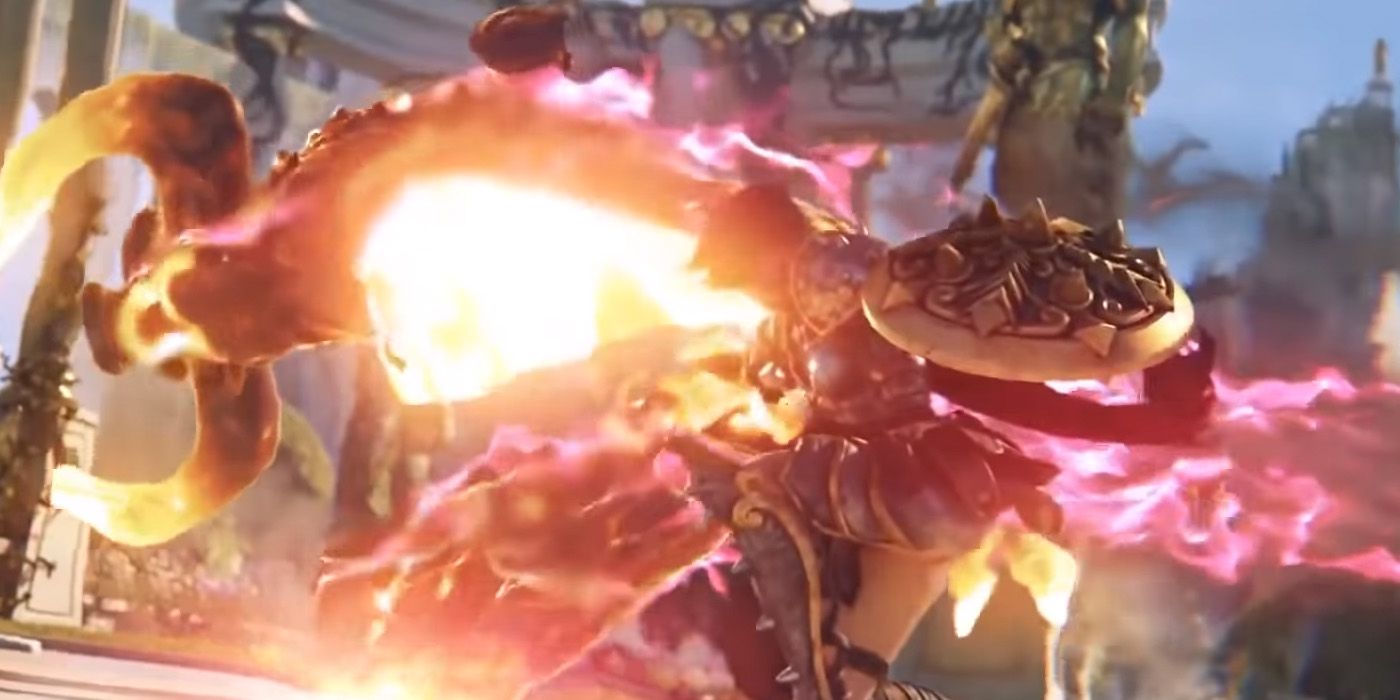
Unlike other God Classes in Smite, Warriors strive to achieve the most balanced in terms of confrontational kits. Unlike the damage-oriented Hunters or the CC-focused Guardians, Warriors want to stay alive while still dealing decent damage. At first glance, this does make them decent - but not necessarily great - fighters. However, it's their Warrior Ultimates that help them shine in any match.
Players who use a Warrior God will most likely that their kits offer both not-so-great damage and not-so-great protections. For instance, Bellona has an aggressive kit that relies on staying in the fight to both buff her damage and defense. Meanwhile, Nike has decent mid-range damage and shields that protect herself while damaging foes.
However, it's the Warrior Ultimate that helps these Gods shine on the battlefield. Unlike the speed-damage focus of most Assassin Ultimates and the damage-heavy components of Hunter Ultimates, most Warrior Ultimates serves as a "pay-off" for an existing gimmick. In turn, most Warrior Ultimates have these qualities:
Emphasizes a motif. Most Warrior Ultimates, as with other Gods', emphasize the running motif or theme of the God they belong to. For instance, Nike's penchant for defensive abilities becomes capitalized with her Sentinel of Zeus (Ult). In this Ult, Nike transforms into a sentinel that gains an extra shield and slows her surroundings. This gives her a protective edge to tank the frontlines.
Incentivizes being in front. Despite their penchant for melee combat, the overwhelming threat of Hunters and Assassins may make Warriors hesitate. Thankfully, most Warrior Ultimates incentivize a Warrior's presence in the front lines. For instance, Bellona's Eagle's Rally (Ult) will grant increased Physical Power and Protections to nearby Gods. This Ult motivates her to get into the front to give her allies this benefit.
With the above in mind, it helps to understand just what makes a Warrior God's Ultimate stand out compared to the rest of their contemporaries. Essentially, aside from the above factors, the best Warrior Ultimates also add something else to the table:
Timing pays off. Great Warrior Ultimates emphasize a Warrior's capacity to time its usage properly. The most useful Ultimates allow players to incorporate its usage into their rotation. In turn, players can turn the tide of battle in a pinch with the right Ult proc.
Flexible and adjustable. Aside from adaptability in terms of timing, the best Warrior Ultimates remain useful regardless of the situation a player is in. The less "requirements" an Ultimate has to become useful, the more helpful it is to Warriors who almost always have to adjust in the nick of battle.
Support component is unparalleled. While most Warrior Ultimates more or less adds a defensive or offensive component to a God's kit, the best Warrior Ultimate also adds a support-oriented element into the mix. That way, a player can get motivated to use the Ultimate in team-fights without extremely strict requirements.
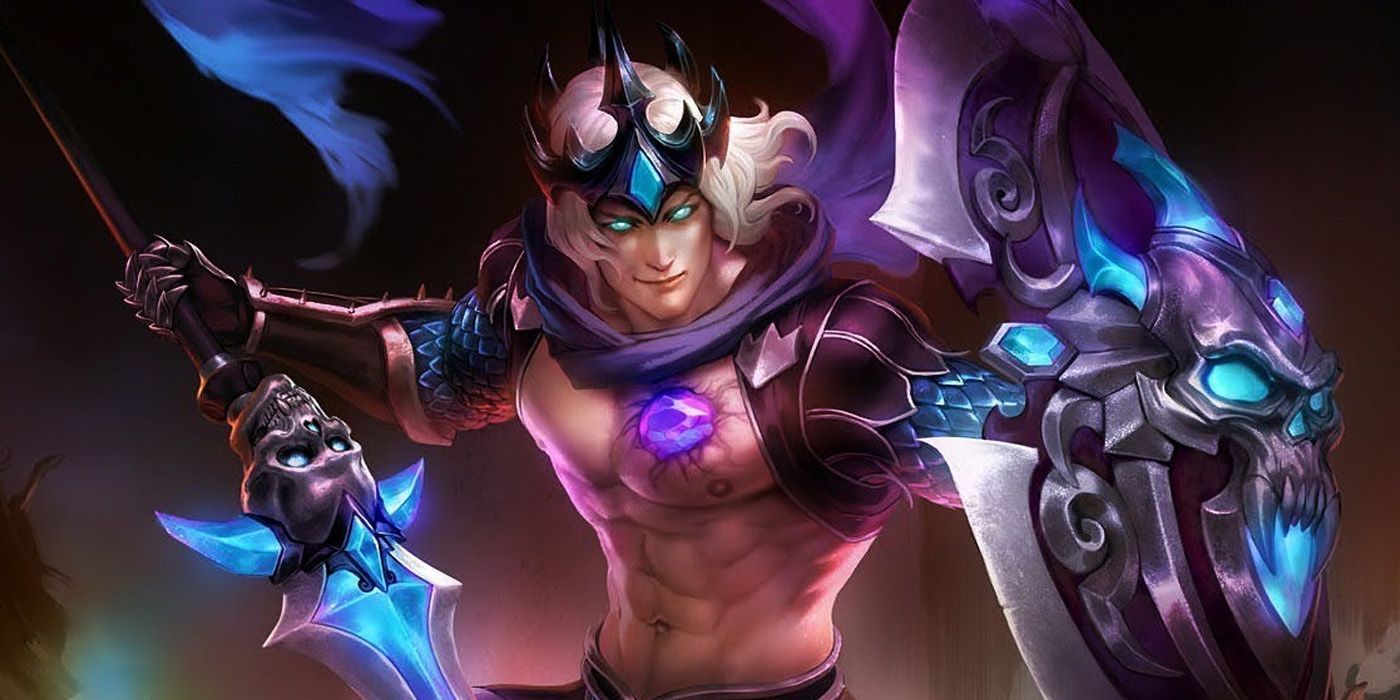
At his core, Achilles will boast his capabilities to adapt in battle. In turn, his attacks give him a healthy mix of offensive and defensive capabilities that aim to make him into an overall balanced warrior.
His Gift of the Gods (Passive) enables him to have two "extra Items" he can wear whenever he returns to the Fountain. When unarmored, Achilles has increased Physical Power and Movement Speed. If armored, Achilles has increased Health and Protections.
In terms of combat, his Shield of Achilles (S1) not only shield bashes enemies to the front for a quick stun, it also affects enemies at a short distance. His Radiant Glory (S2) gives Achilles buffs to his CC Reduction, Protections, and Physical Power - alongside a handy heal whenever he hits enemies with skills. Lastly, his Combat Dodge (S3) allows Achilles to dodge an incoming attack and retaliate in exchange.
Achilles's abilities end with his Fatal Strike (Ult), a dash attack that passes through minions and hits the first God it encounters. At its core, Fatal Strike damages everything it hits, but deals a bonus to Gods.
For the kicker, Achilles immediately executes a God this hits that has HP below 30-percent. Additionally, an execution with this ability lets Achilles perform this again, up to a total of five times. However, Achilles will receive 10-percent more damage while using this Ult.
Its base description alone makes Fatal Strike quite the terrifying Ultimate. Aside from its dash capability, the added execution component can immediately set up Achilles for a Jungle/Assassin build with the right components.
Theoretically, Achilles can snag a team wipe if he ends up using this ability to finish off a crucial confrontation. Granted, Achilles does get up to 50-percent more damage the more he executes with Fatal Strike - but it won't matter if Achilles lands the killing blows first.
Thanks to the combative nature of Achilles's abilities, it's easy to synergize Fatal Strike with his other abilities. In team fights, Achilles should always watch out for enemies who begin to have drastic decreases in their HP.
For an ideal quick combo, Achilles should always proc Radiant Glory (S2) and use Combat Dodge (S3) to get into position quickly. Afterward, his Shield of Achilles (S1) can set him up for a slight stun. Enemies about to hit the threshold could meet quick deaths with Fatal Strike.
As an alternative, Achilles can stun opponents with S1 as soon as he procs S2. He can also chase enemies down for quick strikes with S3 before he begins to pick them off with Fatal Strike.

The Shining Light of Japanese Mythology boasts a kit that turns her enemy's abilities against them. Instead of dealing heavy damage, Amaterasu weakens enemies to leave them vulnerable to her attacks.
Her Illuminating Strike (Passive) puts enemies on her path at a constant disadvantage. Essentially, Amaterasu bestows an aura to an enemy she gets to hit three times. With this aura, enemies not only get 10-percent damage from all sources, but this aura also spreads to nearby opponents.
In turn, the rest of Amaterasu's kit capitalizes on tactical engagement. Her Divine Presence (S1) lets Amaterasu switch between a Benevolence Aura that heals her and gives allies a speed buff, or a Valor Aura that gives them extra attack power. Meanwhile, her Heavenly Reflection (S2) serves as decent damage mitigation and a handy ranged attack option. Lastly, her Glorious Charge (S3) lets her chase foes or dash for an escape.
Amaterasu caps off her abilities with Dazzling Offensive (Ult), a fierce three-strike combo that increases in damage with each successive strike. Essentially, each strike will do 20-percent, 30-percent, and 40-percent additional base damage alongside enemy stun.
In order to capitalize on the Ult's effects, Amaterasu needs to hit a target more than once to receive the sustained damage from the combo.
At its core, Dazzling Offensive is immediately a straightforward offensive ability that works great in confrontations. Its nature as a cone allows Amaterasu to hit multiple opponents in melee range, giving her an immediate advantage in close-quarters combat.
Of course, players need to get careful with their timing with Dazzling Offensive. Remember, the bonuses only stack if Amaterasu gets to hit opponents inside her cone. However, quick-thinking players will know how to taunt opponents into getting into Amaterasu's range, especially if she charges in to defend a position or help a gank.
Thanks to Amaterasu's innate build, she can survive well off on her own with basic abilities. However, she can shine with Dazzling Offensive when timed with her other abilities.
For instance, when Amaterasu enters an engagement, she should immediately proc her Valor Aura (S1) to amp up her Physical Power. Afterward, she should set up her Heavenly Reflection (S2) to not only benefit from damage mitigation but also charge its ranged attack.
It's only after S1 and S2 that Amaterasu can proc her Dazzling Offensive, as the quick strikes here should theoretically set up opponents for a stun and then finish them off with S2's charge. Moreover, Amaterasu can easily chase those who try and run away with Glorious Charge (S3).
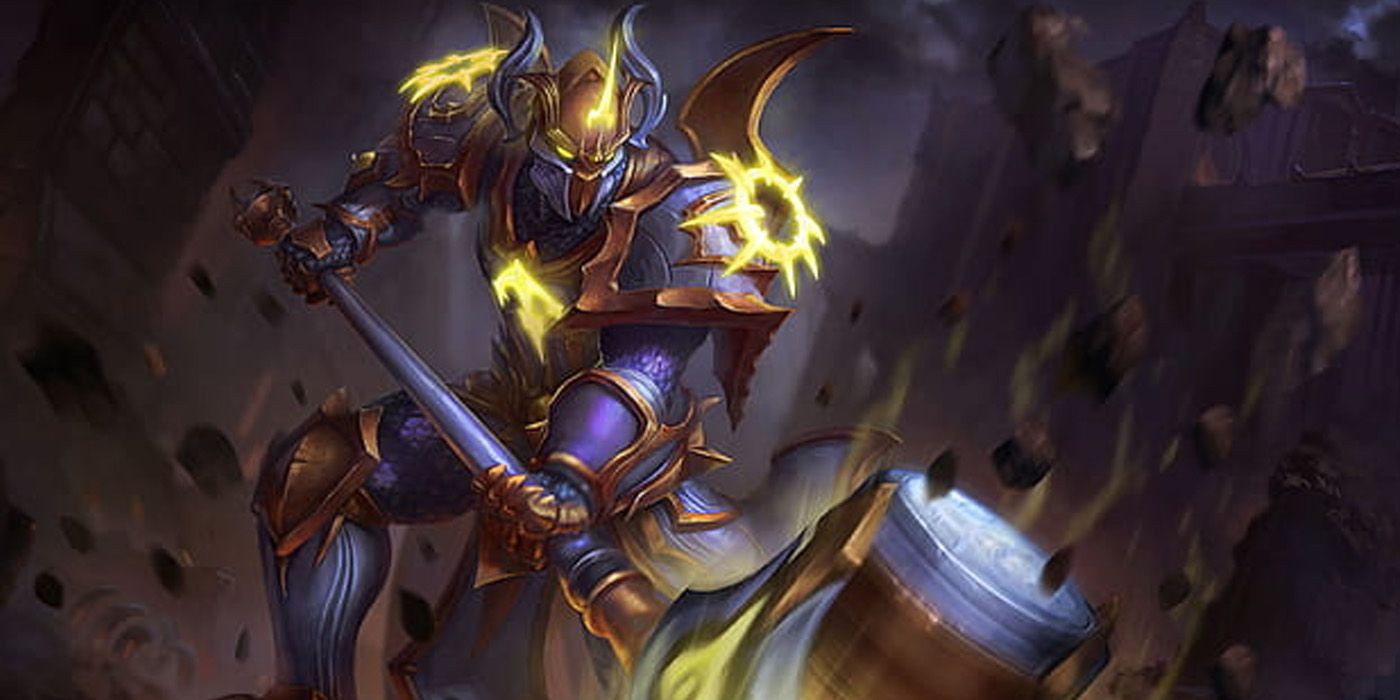
Chaac, the Mayan God of Rain, has a kit that capitalizes on dealing as much damage to multiple enemies. His penchant for area-of-effect attacks makes him a perfect match against mobs or even groups of Gods.
His Overflow (Passive) gives Chaac the opportunity to optimize his rotation, as his next ability will cost no Mana and get a 2-second CD Reduction after five successful Basic Attacks.
Meanwhile, his Thunder Strike (S1) lets Chaac hurl his axe forward, damaging everything around it as it travels to its destination. The axe stays dormant for five seconds before returning to him. His Torment (S2) gives Chaac an AOE attack that damages enemies around him while getting Protections from each hit. Meanwhile, his Rain Dance (S3) summons rain that heals him and gives a speed debuff to enemies.
Chaac's Storm Call (Ult) lets him charge his axe for a duration before unleashing a mighty lightning blast. This attack not only deals AOE around him but also deals knock-up and silence to everything he hits.
In addition, Chaac will receive enhanced damage mitigation and gains immunity to crowd control during the channeling state.
Storm Call has all the qualities of an ideal Ultimate for Warriors. Not only does it have strong base damage, it also disrupts knock-ups and even silences enemies. In turn, Chaac can use Storm Call to either end a team fight or start it while giving the team a huge advantage.
Additionally, Storm Call can even work as a handy escape tool, especially when cornered. Its 50-percent mitigation and CC immunity can save Chaac when used properly.
Thanks to Chaac's offensive nature, Storm Call can easily get synergized into aggressive combos. On a basic sense, players can damage enemies at a distance with Thunder Strike (S1) and getting a nifty teleport-buff with Torrent (S2). Afterward, Chaac can proc Storm Call for the stun and capitalize on Rain Dance (S3)'s slow to secure kills.
Alternatively, Chaac can immediately set up the kill with S1 and trigger the slow with S3. That way, the stun from Storm Call will stop enemies from escaping, and then use the AOE from S2 to finish them off.
For a more devastating combo, Chaac can charge headfirst into battle and stun them with Storm Call immediately. With this, he can secure damage numbers with S1, prevent escape with the slow from S3, and finish them off with the AOE from S2.
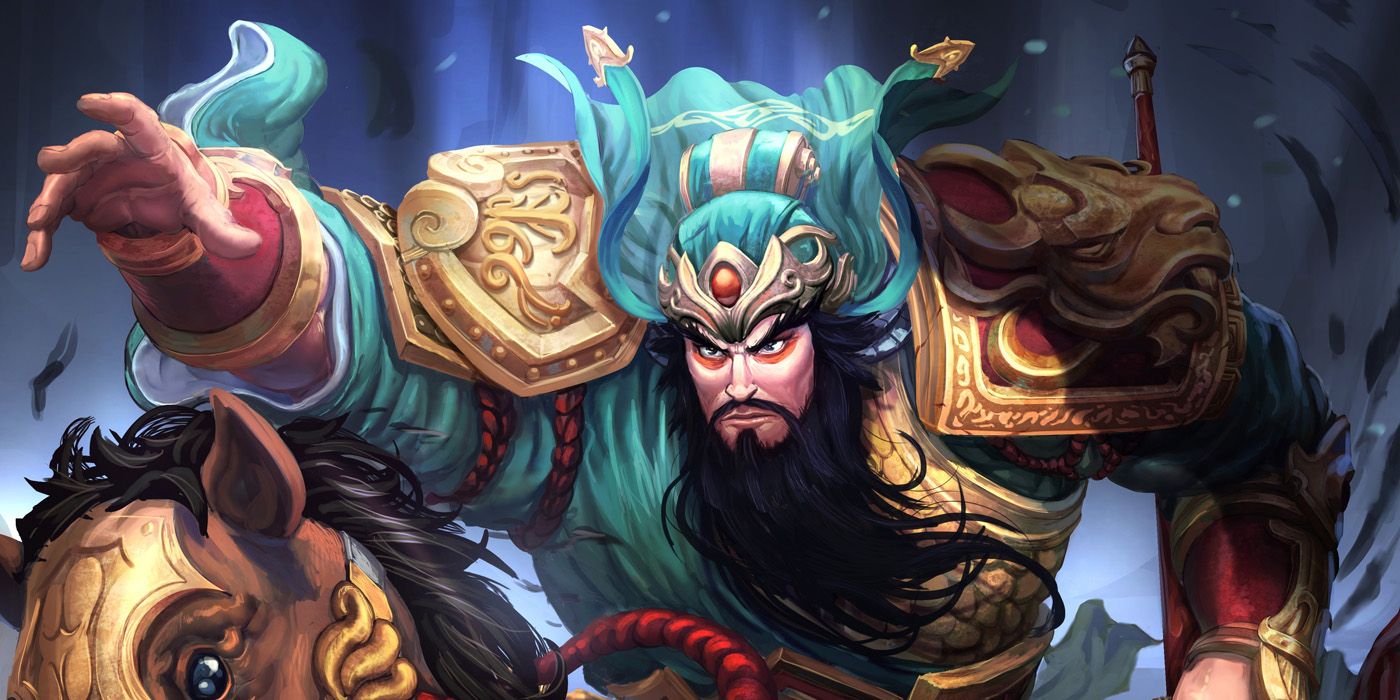
As the Saint of War, Guan Yu embodies the virtues of strength, honor, and loyalty. In battle, Guan Yu leads the charge to attack the enemy, all the while staying to help his allies in need. In turn, Guan Yu's kit focuses more on boosting his allies' morale compared to sheer offense - making him perfect for almost any role and any game mode, from Conquest to Arena.
His Painless (Passive) endows Guan Yu with a special Painless stack the more he deals and takes damage. At maximum stack, Guan Yu gains a boost throughout all his abilities - from additional healing, slowing, and protection steals.
His Conviction (S1) heals himself and allies around him, alongside a 2-second CD reduction for allies. Meanwhile, his Warrior's Will (S2) serves as a dash attack that damages and slows enemies around him while giving himself a 2-second CD reduction and CC buffs. Lastly, his Taolu Assault (S3) is an all-around attack that steals protections from the enemy.
RELATED: 5 Ways Valorant Is Becoming The Best Hero Shooter (& 5 It’s Still Overwatch)
Despite his balanced buffs and damages, Guan Yu lives up to his name with Cavalry Charge (Ult). This ability mounts Guan Yu to his warhorse and charges into a direction. He can attack while mounted, this time enjoying the benefits of CC reduction.
While attacking, Guan Yu slows down enemies while increasing damage for enemies he hits consecutively.
At first glance, players might think that Guan Yu can simply move around and attack enemies while steering. However, this Ult also gives them full control of how fast or slow they want Guan Yu to move and even grants him CC immunity.
In addition, enemies that Guan Yu consistently hits aren't just slowed but also increase in damage. Lastly, Cavalry Charge gets a speed boost depending on speed buffs Guan Yu has, so theoretically he can rush from one lane to the next as though he's a Hunter or an Assassin.
At its core, Cavalry Charge has quite a straightforward means of getting integrated with the rest of Guan Yu's build. For instance, Cavalry Charge does get a two-second stun and a 40-percent slow increase if he uses this Ult while his Painless stacks are full.
In addition, Guan Yu can chase enemies down with Cavalry Charge or even use it immediately in team fights. Its AOE potential is decent, and its stun-slow capabilities can help provide a team wipe setup.
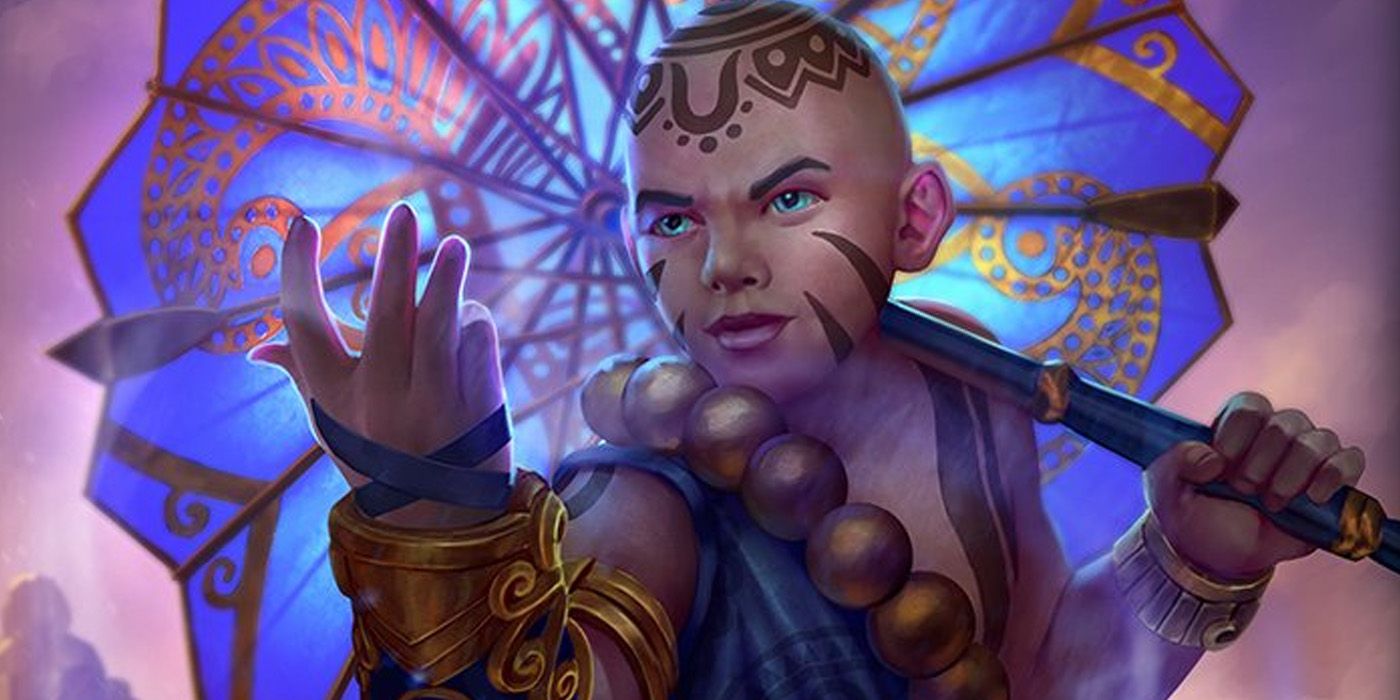
People constantly underestimate Vamana for his size. Little do they know, this child is the Fifth Avatar of Vishnu - capable of even shaming the mightiest of kings. As a Warrior, Vamana has a fairly-balanced kit, not necessarily emphasizing offense and defense.
His Sleeping Giant (Passive) converts some of his physical protections into Physical Power, enabling him to deal strikes with more damage.
Vamana's Clear the Path (S1) is a dash attack that enables him to hit and knock up opponents into the air. Meanwhile, his Armored Umbrella (S2) imbues his umbrella with physical armor to deal a harsh frontal attack. Lastly, his Umbrellarang (S3) lets him throw his umbrella forward to slow enemies down and hit everything again on its way back.
Despite the rather humble nature of his attacks, Vamana unleashes his wrath with Colossal Fury (Ult). This Ult not only grows Vamana's size but also enhances his Physical Power, protections, and even makes him immune to CC. He gains reduced movement penalties while his basic attacks also damage nearby enemies.
Additionally, attacks from other Gods also increases Vamana's duration to pass through walls made by other players.
At its core, Vamana's Colossal Fury serves as a great way to steal the attention in team fights. The form's inherent defenses make it such a literal huge threat that enemies will be forced to focus their attention on him, leaving teammates free to land the killing blows.
Additionally, Colossal Fury's benefits almost always adds a huge amount of damage mitigation to Vamana, making him almost immune to enemy attacks during this stage.
Due to the straightforward nature of his Colossal Fury, Vamana should capitalize on his kit before tapping into his giant form. Thankfully, his kit acts as a setup to stun opponents and stop escaping foes so he could finish them off with Colossal Fury's enhanced attacks.
An ideal combo would be using Clear the Path (S1)'s knock up and slowing everything down with the Umbrellarang (S3). Afterward, his Armored Umbrella (S2) can enhance his attacks to impose enough of a threat to enemies to stop them from escaping. It's only then that he should proc Colossal Fury to maximize his damage potential.
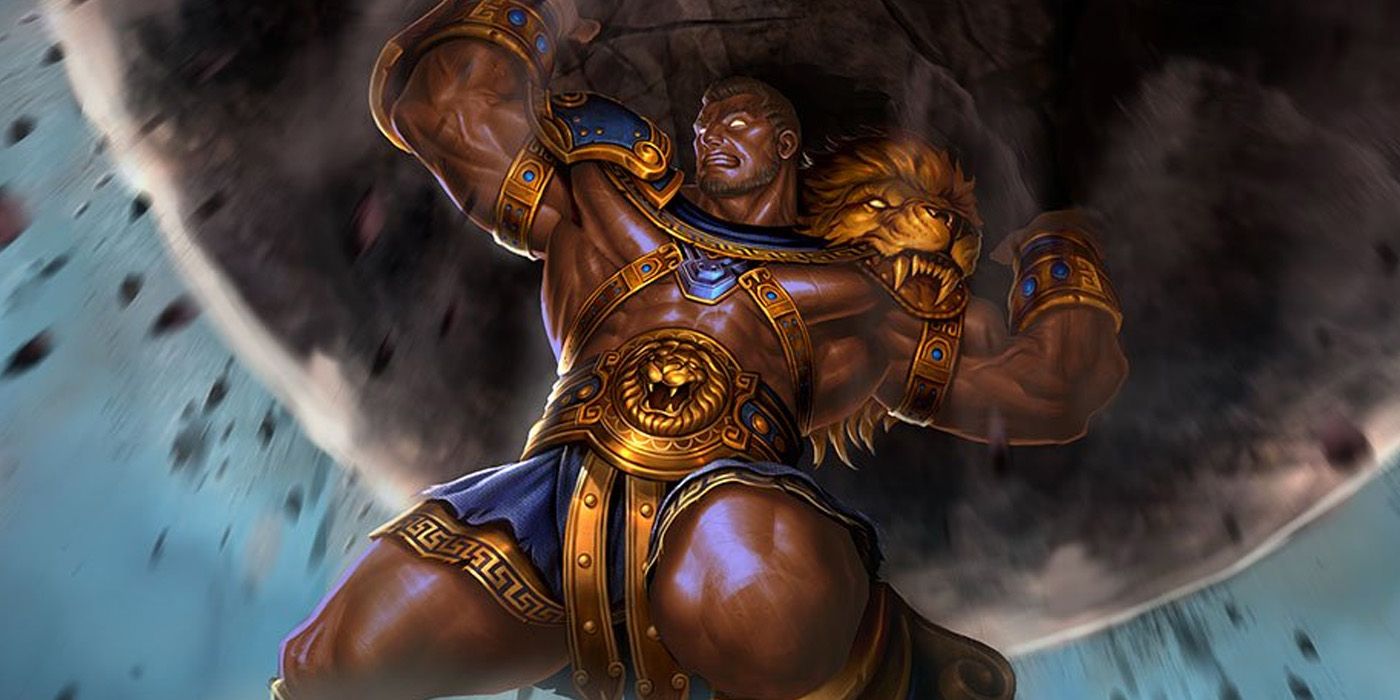
The Champion of Rome boasts his sheer strength and power to dominate the battlefield, and Hercules's kit is a direct translation of his immense capabilities.
His Strength from Pain (Passive) endows Hercules with increased Physical Power every time he gets hit by an enemy god. This makes him quite a formidable foe in team fights.
His Driving Strike (S1) is a dash ability that not only stuns enemies but also pushes them back. His Earthbreaker (S2) unleashes a shockwave that damages enemies in a path and sends those at the end closer to him. Meanwhile, his Mitigate Wounds (S3) not only instantly heals Hercules but also grants him enhanced protections.
However, Hercules devastates the battlefield with his Excavate (Ult). Thanks to this ability, Hercules gets a massive boulder from the ground and hurls it towards a path. Its initial landing site will deal massive damage to opponents.
Moreover, the boulder will continue rolling after dealing this strike, dealing less damage to enemies along the way.
Hercules demonstrates his sheer strength with Excavate - and it's a huge pain in the butt to be on the receiving end while cornered. Essentially, not only does the boulder act as a decent AOE, but it can bounce off walls throughout its entire duration. In turn, a well-placed Excavate can theoretically hit the same opponent multiple times if they're stuck near walls - such as if they're escaping from Mid or inside the Jungle.
Thanks to Hercules's straightforward kit, he can utilize all of his abilities and end up pummeling through opponents with Excavate. Essentially, Hercules buffs himself with Mitigate Wounds (S3), giving him enough time to unleash his Earthbreaker (S2). Not only does he hit multiple opponents this way, but this also sends enemies from the back to face him.
With this, he can deal yet another devastating blow with Driving Strike (S1). While enemies are stunned with S1, Hercules can quickly end a team fight with Excavate.
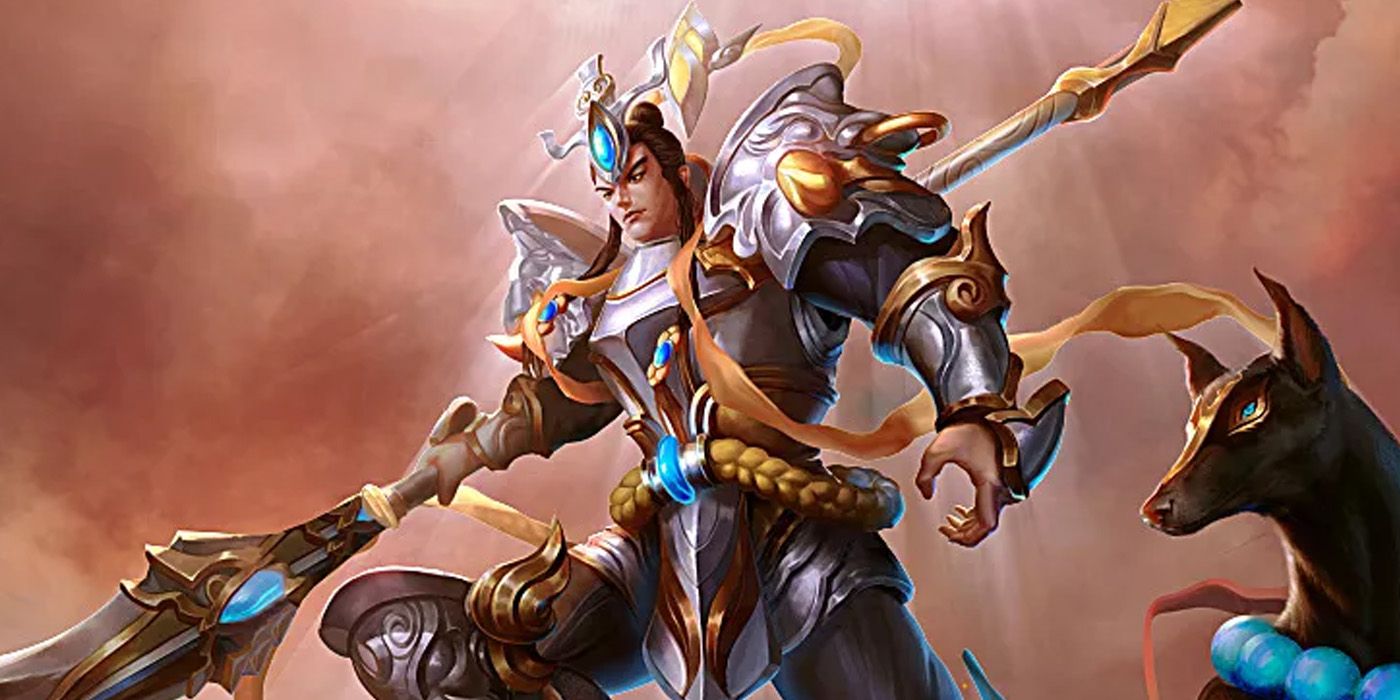
The Illustrious Sage uses his sheer brilliance and intellect to control the tide of battle. His kit emphasizing on buffing himself during combat to gain a wide variety of benefits.
His Howling Celestial Dog (Passive) allows Erlang Shen to command his dog to attack enemies whenever he hits them with a basic attack. This slightly increases his damage in the field.
His Spot Weakness (S1) inherently boosts his physical damage. Meanwhile, his Pin (S2) not only deals decent AOE but also roots some enemies in place. Lastly, his 72 Transformations (S3) enables him to either boost his attack speed or knocks up enemies in his path.
RELATED: League of Legends Wild Rift: 5 Reasons We're Excited (& 5 We're Scared)
Where Erlang Shen shines is his 9 Turns Blessing (Ult). This ability allows Erlang Shen to taunt nearby Gods to increase his overall damage mitigation.
Moreover, if he's still alive after this taunt, he immediately gets an instant heal - perfect for instant recoveries during high-intensity clashes.
It's thanks to 9 Turns Blessing that Erlang Shen gets a huge portion of his control potential. This ability is as straightforward as it gets - he receives damage mitigation after taunting an enemy and gets some of his Health back if he survives the encounter. Players who know exactly when to proc this Ult can help Erlang Shen get past through decent attacks from the enemy side, only to get enough back enough HP to strike a fierce counter.
Interestingly, 9 Turns Blessing does reflect Erlang Shen's kit of giving him more control instead of simply dishing out damage. In turn, synergies with 9 Turns Blessing more or less revolve around keeping control of team fights or even solo.
For instance, Erlang Shen can establish control over a skirmish by using Pin (S2) to stun his target in place. Afterward, his 72 Transformations (S3) can also knock opponents down with his Turtle Form. It's in this crucial moment that Erlang Shen should proc 9 Turns Blessing to capitalize on the stun time and recovery, as well as use Spot Weakness (S1) to gain an offensive buff to use by the time he launches a counter-assault.
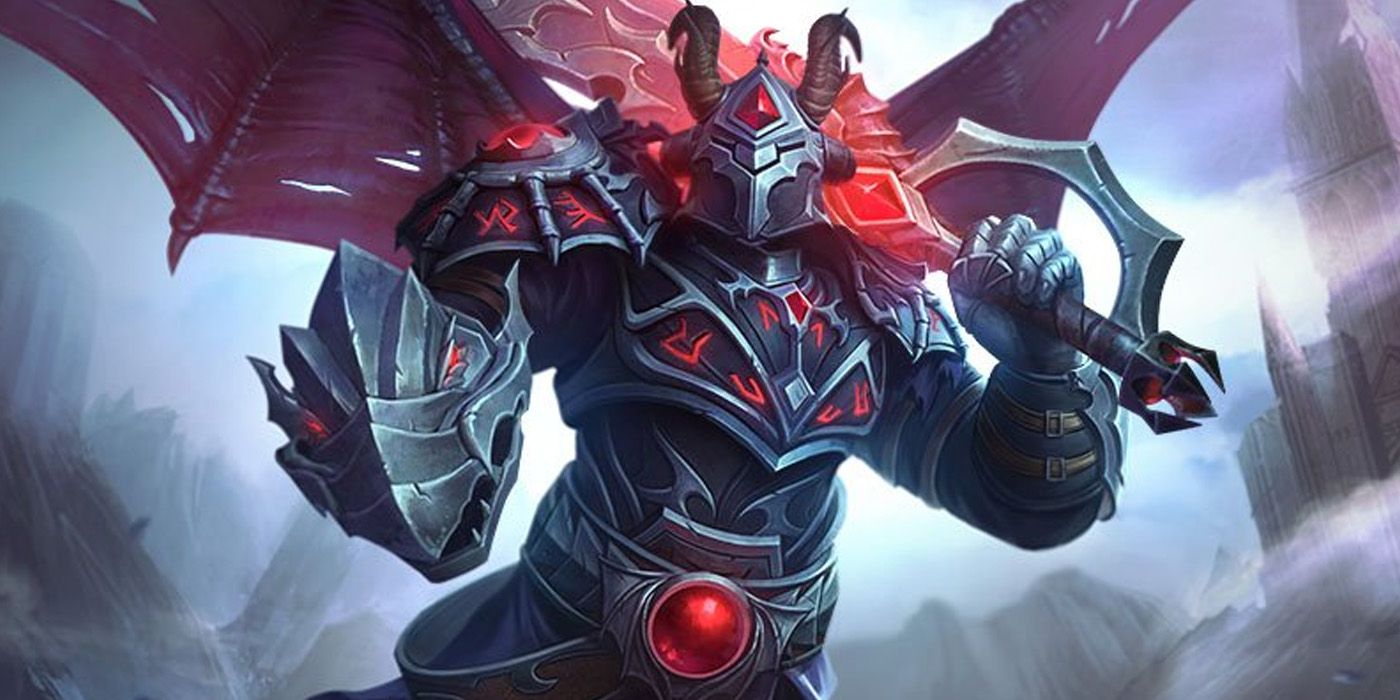
The Lawgiver of Norse Mythology spares no expense to fear - Tyr is honor, courage, and justice himself. His kit reflects his unburdened self, focusing on maintaining stable defenses while pummeling through foes who dare get in his way.
His Unyielding (Passive) ensures Tyr cannot be affected by Mesmerize, Intoxicate, Fears, Taunts, and Stuns for more than a second.
Meanwhile, his Fearless (S1) provides Tyr with a defensive and offensive charge that knocks a number of opponents. His Power Cleave (S2) hits all enemies in a 180-degree cone, with an offensive variant that knocks up enemies and a defensive variant that heals him. His Change Stance (S3) gives him Physical Power with an Assault Stance and protections with a Guard Stance.
Tyr exacts justice with Lawbringer (Ult), leaping through the air and unleashing an attack that slows all enemies in a target area. Despite the rather straightforward nature of this attack, the harsh slow effect this attack brings can very well set up opponents for a hard beating.
Lawbringer shines among other Ults because it's too straightforward yet extremely efficient. Essentially, Tyr just leaps in the air and smashes the ground to do AOE damage. However, this straightforward ability does tie into a lot of Tyr's kit in general.
Due to Lawbringer's mobility, Tyr can use this to close the gap or even rush in team fights. He can even use this ability to run away. Moreover, targets slow down when hit by Lawbringer, meaning Tyr can use this as a setup for an efficient juggle combo.
Due to the offensive nature of Tyr's abilities, Lawbringer actually works best as a setup for a team fight. Moreover, once Tyr unlocks Lawbringer, this easily becomes a great setup for his combos.
Essentially, his best combo begins by Change Stance (S3) and activating his Assault Stance. And then, he should use Lawbringer to rain justice over a target - especially someone who imposes a threat to the team's assault. Afterward, his Fearless (S1) and Power Cleave (S2) easily forms a decent 1-2 punch that can pummel through another melee God or the enemy's frontline defense.
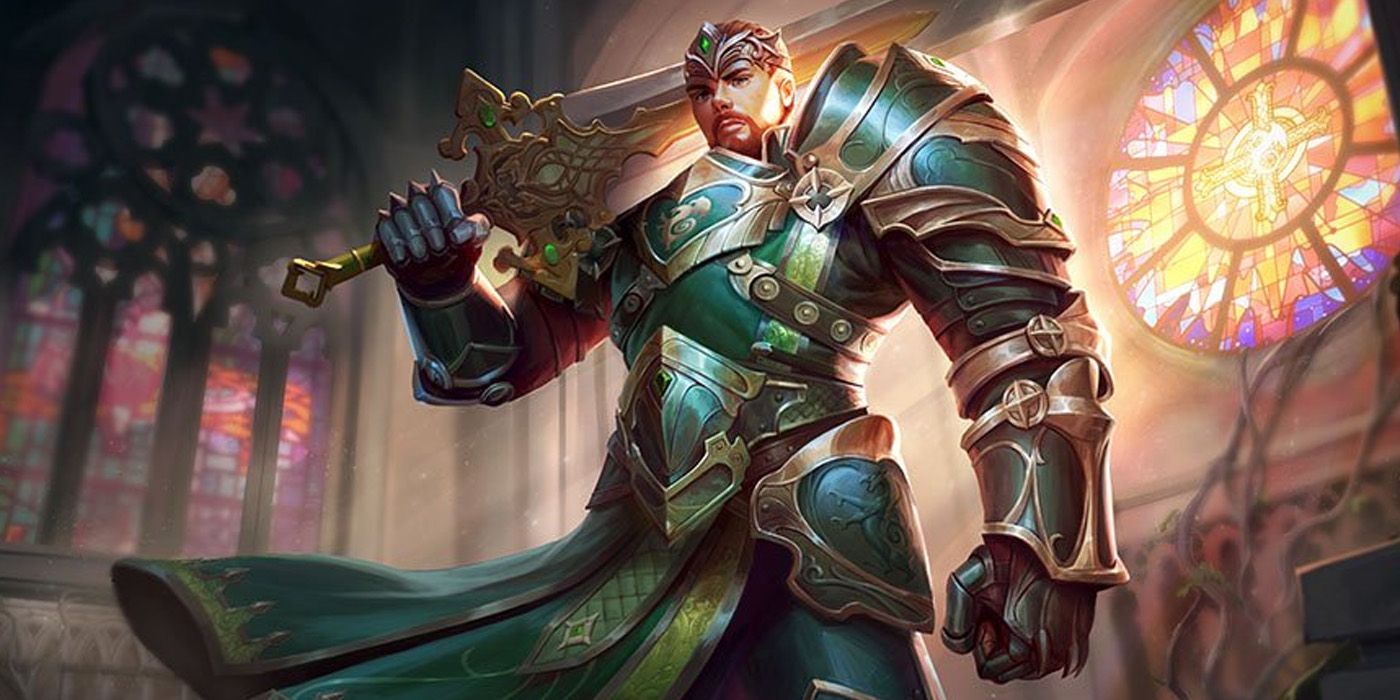
The Wielder of Excalibur possesses incredible strength and valor to prove his worth of ruling Camelot. Thanks to his offensive kit, King Arthur plays by a different set of rules that allows him to dominate the field with calculated aggression.
His Steadfast (Passive) gives him a stack whenever he damages a God. In turn, these stacks boost his energy gain and damage reduction. Moreover, this Passive forces King Arthur to switch between Standard and Combo Abilities whenever he uses abilities - and all of them become instant casts. As a tradeoff, he no longer benefits from Item Passives and Attack Speed.
His Overhead Slash/Hamstring (S1) has a normal variant that generates a mid-range attack and a special variant that cripples enemies. Meanwhile, his Battle Stomp/Uppercut (S2) either slows down enemies or knocks up enemies with a charge. Lastly, his Twin Cleave/Bladestorm (S3) reduces protections or deals more damage to foes.
King Arthur proves he isn't to be trifled with thanks to Sundering Strike/Excalibur's Wrath (Ult). This Ult gives King Arthur the opportunity to do two different attacks.
His low-energy Ult stuns enemies with a jab attack. Meanwhile, his high-energy variant is a 6-attack barrage that knocks-up opponents and damages them with a harsh AOE.
Players who take the time to study King Arthur's combos will have a huge pay-off depending on which version of the Ult they use. For instance, Sundering Strike launches a small projective after a quick lunge which stuns enemies within his path. This is ideal whenever players need to dish out a combo but the other Ult isn't ready.
However, Excalibur's Wrath is really where the money's at. This quick dash-and-knock-up maneuver is easily a must-have when facing other opponents in team fights.
As a combo-reliant God, it's easy to note that King Arthur relies on a mix of low-energy and high-energy moves to capitalize his damage output. In terms of maximizing both uses of his Ultimate, perhaps it helps to look at a five-ability maneuver King Arthur always uses.
Players can begin by using Excalibur's Wrath for the knock-back and the six-strike combo. Afterward, he can Hamstring (S1) opponents waiting on the ground below and follow up with a Battle Stomp (S2) to slow everyone around him. After that, he can unleash an Uppercut (S2) to knock up enemies back in the air and end with Sundering Strike for a quick stun.
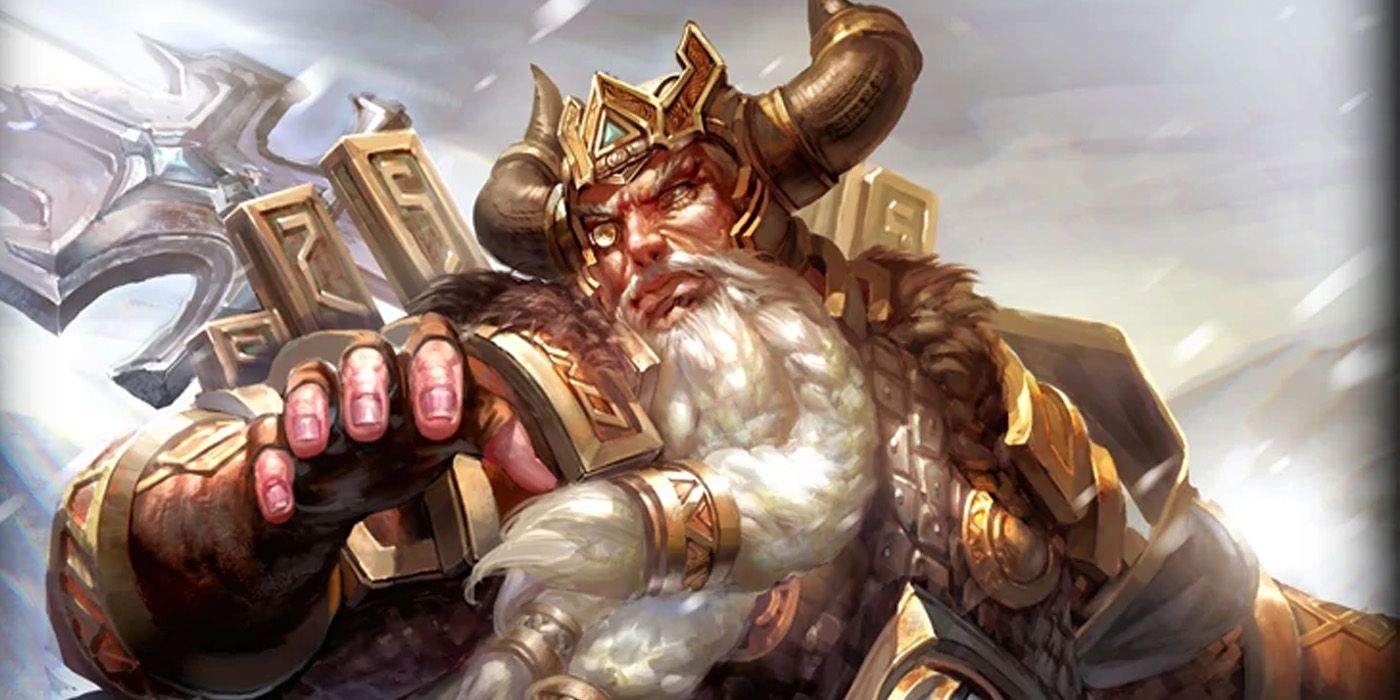
The All-Father rules all Nine Realms, and he isn't a God to be underestimated. As the mightiest among the Aesir, Odin's kit isn't surprisingly offensive. Rather, he specializes in hindering his opponent's movements while empowering himself - creating a powerful defense that will make enemies hesitate to approach.
His Path to Valhalla (Passive) endows Odin with bonus Power and Movement Speed whenever a God dies in the match. This simple Passive can help Odin deal massive damage in teamfights.
Meanwhile, his Lunge (S1) is a quick leap to a location that damages all targets. His Raven Shout (S2) summons a flock of crows to defend himself while attacking nearby enemies. Lastly, Gungnir's Might (S3) endows Odin with immunity against knockbacks while slowing enemies around him. With S3, Odin also gains benefits depending on how many runes he ends up with.
For his best ability, Odin boasts his Ring of Spears (Ult). The All-Father uses this ability to summon spears that will block the movement of his enemies. While inside the Ring, enemies cannot heal whereas Odin himself cannot be rooted and slowed.
Whereas parts of the wall can be destroyed after five basic attacks, Gungnir does follow enemies who escape - slowing them down and taking damage. Moreover, enemies who die inside the Ring will give Odin a permanent boost in Physical Power.
Outside Odin's other abilities, it's Ring of Spears that makes Odin's kit extremely useful. With a maximum CDR stat, Ring of Spears can have as little as a 45-second CD - making this a handy trap for most team fights. In order to leave, enemies either have to leap, use the Phantom Veil, or attack the wall five times. Whereas the Spear damages enemies who leap past it, the five basic attack requirement to break a portion of it is more than enough for Odin's allies to strike a counter-attack.
In essence, Ring of Spears is a great hindrance to Gods with low mobility and relies on healing abilities. Moreover, Odin who uses this on enemies who just used their mobility skills are almost immediately set up to get wiped out.
In terms of combos, Ring of Spears easily synergizes in team play - especially as a means to trap opponents. Essentially, Odin will have to open with Ring of Spears to trap enemies inside.
If Odin wants to force enemies inside the Ring longer without sustaining too much damage, Raven Shout (S2) can be a handy way to keep them in. Likewise, Gungnir's Might (S3) further slows down the enemy and lessens their chance of escaping. Odin can then use Lunge (S1) to escape past his Ring quickly. In turn, this particular combo is a great way to trap the enemy and help the team retreat.
NEXT: 10 Bad Habits New Players Create When Starting Smite (& How To Avoid Them)

